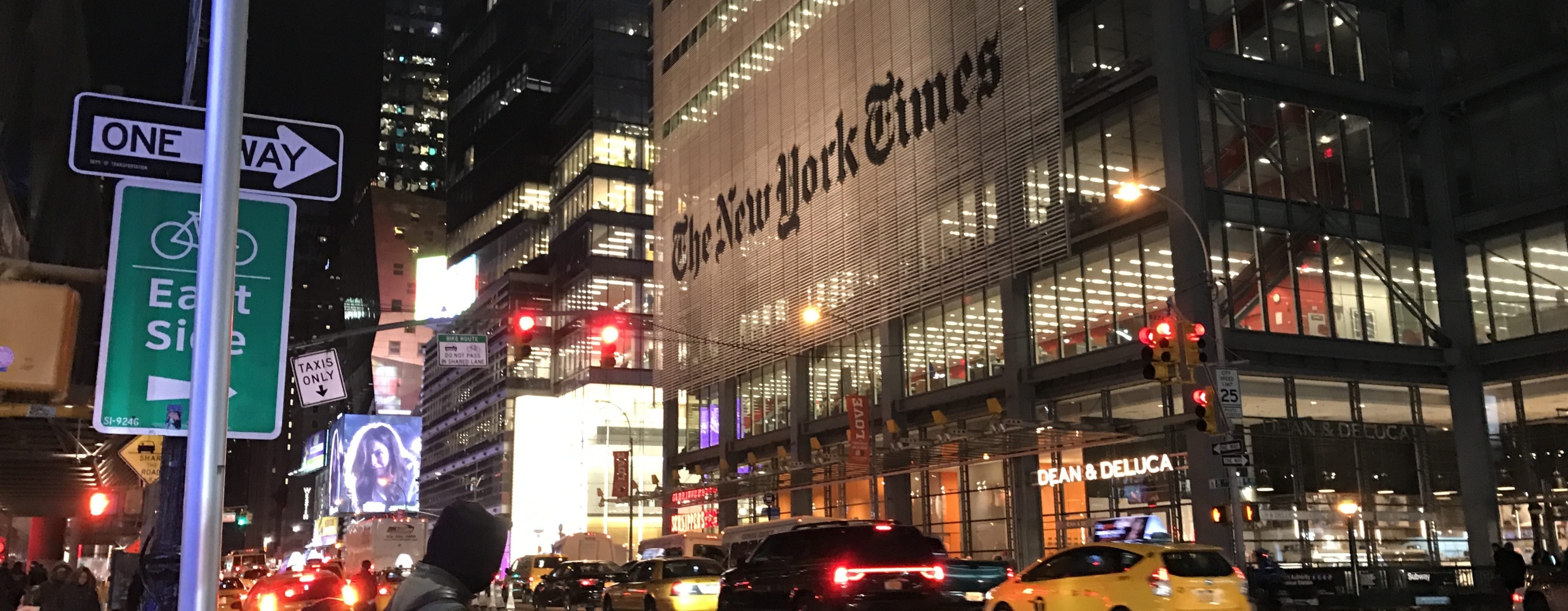Walkouts at The New York Times Thursday made clear that the most at-risk newsroom role is copyediting.
But these staff cuts are not just about eliminating typo-catchers, as the punny signs journalists held during the walkout suggested. In fact, the most important development is the reorganization and possible reduction in the number of editors responsible for content development—the so-called “backfield” editors at the Times.
Most people are unlikely to understand the distinction between copy editors and backfield editors, which are set to merge into a single role under the Times’s restructuring. But these two types of editors do very different work and have distinct skill sets—and threatening backfield editors’ roles is deeply concerning. They play a critical role in almost every stage of a story—from commissioning to a final read for tone and emphasis. Great editors may well be invisible to news consumers, but fewer of them on the job at the Times could result in journalism with less heft, importance, and nuance.
TRENDING: For The New York Times, Trump is a sparring partner with benefits
Backfield editors at the Times help reporters develop their stories. Their talents lie in figuring out the best angles, in advising reporters about how to deal with persnickety sources, in knowing when to alert the legal department. They act as taskmasters, and often suggest and coordinate more robust digital journalism efforts.
These backfield editors have often been reporters themselves (though some have also been copy editors), and generally have section-specific knowledge. Business-desk backfield editors, for example, have specialized understanding about various financial concepts and offer an important historical perspective for reporters who may move from beat to beat.
Liz Spayd, the Times’s former public editor, wrote a column in February foreshadowing the changes. From management’s perspective, cutting down backfield editing was a way to reduce what an internal report described as “low value line-editing” and speed up digital production.
Backfield editors aren’t low-value line editors. Their editorial judgment helps restrain journalists from routine coverage and inspires thinking that’s bigger and bolder.
Cuts and reorganizations of copy editors are nothing new, even for the Times, which has reduced its staff six times since 2008. The paper has also sought to streamline digital production and make copy editors more digitally-focused and present throughout the day, rather than having them arrive in the evening to orchestrate a print edition.
Copy editors are deeply valuable and important. They are the last check before a story reaches the public and the final line of defense against factual errors—the original “fact check,” if you will. They often self-identify as the shy, quiet types who love journalism, obsess about details, and have actively sought throughout their careers to avoid reporting. But they generally offer a newsroom something quite different from what backfield editors do.
RELATED: Times treads an increasingly slippery path between news and advertising
They are often less focused on big-picture content strategy and have not traditionally been involved in directing reporters about how to cover a story.
Nonetheless, solidarity with copy editors is also important for another reason journalists might not be thinking about: Copy editors often have some of the strongest attachments to unions that protect journalists’ jobs. Go to newsrooms across the country—from the AP to The Seattle Times—and you’ll find copy editors with T-shirts and signs on their desks showcasing guild solidarity.
Part of the reason for their union loyalty is that copy editors have been decimated industry-wide. A 2013 ASNE survey found that almost a third of copy editors had been cut in the previous five years. An earlier assessment suggested that between 2002 and 2012, the number of copy editors at newspapers declined by almost half.
The fate of copy editors, and now backfield editors, signals what unions can and can’t do to protect journalists.
At a time when journalists at digital-native sites are taking steps to unionize, and differences between digital journalists and other “print” journalists are still distinct (including at the Times), the fate of copy editors, and now backfield editors, signals what unions can and can’t do to protect journalists.
As CJR has noted, “news unions are back”—being proactive rather than defensive—with significant energy coming from digital journalists. The Writers Guild of America East was able to extract some concessions for journalists laid off in June by HuffPost.
Failures to exact reasonable concessions for copy editors might interfere with some of this union energy, making union organizing less of what former Politico labor writer Mike Elk told CJR was “the new hip thing to do.”
The Times both leads and follows the industry and is far from the first newspaper to make cuts to backfield editors. Nonetheless, what happens at the Times is deeply symbolic and closely watched.
Gannett and Gatehouse already have done away with most local copy editors and created consolidated copy editing hubs, often far from the newspapers being copyedited, while McClatchy has condensed copyediting of its Carolina newspapers into a single publishing center.
So while the Times is not starting a trend, it nonetheless is sending a powerful message to the rest of the news industry: If the Times can cut its backfield and copy desk, then executives elsewhere can more easily justify similar cuts.
ICYMI: Hell hath no fury like The New York Times scorned by Hollywood
Nikki Usher is an associate professor at The George Washington University in the School of Media and Public Affairs. She is the author of two books, Interactive Journalists: Hackers, Data, and Code and Making News at The New York Times.

